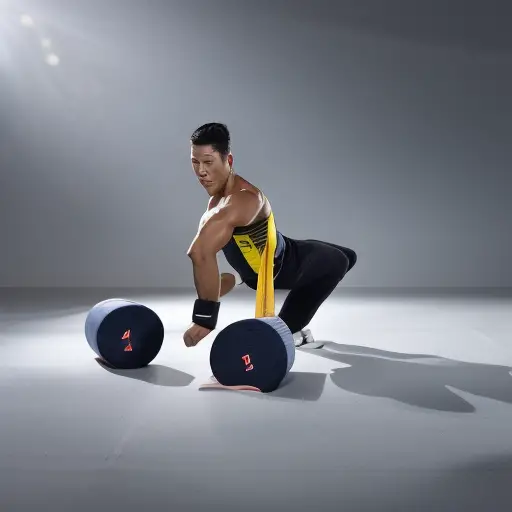Incorporating Plyometrics Into Taekwondo Training

In the world of taekwondo, where precision, speed, and power are paramount, incorporating plyometrics into training can be likened to adding jet fuel to a high-performance vehicle.
Plyometric exercises, designed to enhance explosive power and agility, have been proven to yield remarkable results in athletic performance.
This article explores the benefits of incorporating plyometrics into taekwondo training, providing evidence-based insights and instructional guidance on implementing plyometric drills to elevate kicks and create a well-rounded workout routine.
The Benefits of Plyometrics in Taekwondo Training
One of the key advantages of incorporating plyometrics into Taekwondo training is the enhancement of explosive power and agility. Plyometric exercises involve quick, powerful movements that target the muscles’ stretch-shortening cycle, which allows them to generate maximum force in a short amount of time. By incorporating plyometrics into Taekwondo training, athletes can improve their jumping ability, enabling them to execute high kicks and aerial maneuvers with greater ease and height.
Plyometric exercises also help to reduce the risk of injury in Taekwondo training. The explosive movements involved in plyometrics strengthen the muscles, tendons, and ligaments, making them more resilient and less prone to strains and sprains. Additionally, plyometrics train the body to absorb and distribute force efficiently, which can help prevent common injuries such as ankle sprains or knee ligament tears.
Research has shown that plyometric training can significantly enhance performance in various sports, including Taekwondo. A study published in the Journal of Strength and Conditioning Research found that athletes who incorporated plyometrics into their training program showed significant improvements in jumping ability and agility compared to those who did not. These findings highlight the effectiveness of plyometric exercises in enhancing the physical capabilities required for Taekwondo.
Plyometric Exercises to Improve Power in Taekwondo
Enhancing power in Taekwondo can be achieved through the incorporation of specific plyometric exercises. Plyometric exercises are dynamic movements that involve a rapid stretch of a muscle followed by a quick contraction, resulting in enhanced power output. These exercises are particularly beneficial for Taekwondo practitioners as they require explosive movements and the ability to generate maximum force in a short amount of time.
There are several plyometric exercises that can be incorporated into Taekwondo conditioning to improve power. One example is the squat jump, which involves starting in a squat position and explosively jumping as high as possible. This exercise targets the lower body muscles, including the quadriceps, hamstrings, and glutes, which are essential for generating power in kicks.
Another effective plyometric exercise for Taekwondo sparring performance is the tuck jump. This exercise involves jumping vertically while bringing the knees towards the chest. Tuck jumps improve explosive power and coordination, which are crucial for executing fast and powerful kicks in sparring situations.
By incorporating these plyometric exercises into Taekwondo training, practitioners can enhance their power output, allowing them to deliver stronger and faster kicks. These exercises should be performed with proper technique and gradually progressed in intensity to ensure safety and effectiveness.
In the subsequent section, we will explore how plyometrics can also be used to enhance speed and agility in Taekwondo training.
Enhancing Speed and Agility Through Plyometrics
To improve speed and agility in Taekwondo training, plyometric exercises offer an effective and dynamic approach. Plyometric training involves explosive movements that target fast-twitch muscle fibers, which are essential for generating quick and powerful movements in Taekwondo. By incorporating plyometric exercises into your training routine, you can enhance your speed and agility, allowing you to react faster and move more efficiently during kicks and footwork.
Here are some plyometric exercises specifically designed for Taekwondo:
| Exercise | Description |
|---|---|
| Box Jumps | Jump onto a box or platform, landing softly and immediately jumping back down. This exercise improves lower body power and explosiveness. |
| Lateral Bounds | Jump sideways as far as possible, landing on one leg and immediately exploding back in the opposite direction. This exercise enhances lateral movement and agility. |
| Tuck Jumps | Jump as high as possible, bringing your knees up towards your chest. This exercise develops explosive leg power and improves vertical jump height. |
Incorporate these exercises into your training sessions, performing 3-4 sets of 8-10 repetitions for each exercise. Remember to focus on proper form, emphasizing power and speed in each movement. With consistent plyometric training, you can significantly enhance your speed and agility, giving you a competitive advantage in Taekwondo.
Plyometric Drills for Explosive Kicks in Taekwondo
Plyometric drills, such as jump kicks and bounding exercises, can be utilized to develop explosive power in Taekwondo kicks. Plyometric training for Taekwondo forms and sparring can greatly enhance an athlete’s performance by improving their ability to generate maximum force in a short amount of time.
Jump kicks are a common plyometric exercise used in Taekwondo training. These drills involve jumping off one leg and executing a kick in mid-air. By incorporating jump kicks into training, athletes can improve their lower body strength, explosiveness, and kicking technique. This exercise also helps in developing balance and coordination, which are essential for executing precise kicks.
Bounding exercises, on the other hand, involve explosive movements in a forward motion. This exercise mimics the explosive nature of Taekwondo kicks and helps train the muscles to generate power quickly. By incorporating bounding exercises into their training routine, athletes can improve their stride length, leg power, and overall explosiveness.
It is important to note that plyometric exercises should be performed with caution to prevent injury. Athletes should start with low-intensity exercises and gradually progress to more challenging ones. Additionally, proper form and technique should be emphasized to ensure maximum effectiveness and reduce the risk of injury.
Incorporating Plyometrics Into a Well-Rounded Taekwondo Workout
For a well-rounded Taekwondo workout, incorporating plyometrics can be beneficial in improving overall athleticism and enhancing performance. Plyometric training involves explosive movements that help develop power, speed, and agility, which are essential in Taekwondo. By incorporating plyometrics into your training routine, you can improve your ability to generate force quickly, leading to more powerful kicks, jumps, and movements.
To help you understand how to incorporate plyometrics into your Taekwondo workout, here are some examples of plyometric exercises and their benefits:
| Plyometric Exercise | Benefits |
|---|---|
| Box Jumps | Improves lower body explosive power |
| Medicine Ball Throws | Enhances upper body power and rotational strength |
| Depth Jumps | Develops reactive strength and landing mechanics |
When incorporating plyometrics into your Taekwondo training, it is essential to keep in mind some common mistakes to avoid. These include:
- Performing exercises without proper technique and form, which can lead to injuries.
- Neglecting proper warm-up and cooldown routines, which can increase the risk of muscle strains or pulls.
- Overtraining by doing too many plyometric exercises without allowing sufficient recovery time, which can lead to overuse injuries.
Frequently Asked Questions
What Is the Recommended Frequency of Incorporating Plyometrics Into Taekwondo Training?
The recommended frequency for incorporating plyometrics into taekwondo training depends on the individual’s training goals, current fitness level, and injury history. It is important to track progress and adjust frequency accordingly.
Are There Any Precautions or Potential Risks to Consider When Practicing Plyometric Exercises for Taekwondo?
When practicing plyometric exercises for Taekwondo, it is important to consider precautions and potential risks. Precautions include proper warm-up, technique mastery, and appropriate footwear. Risks may include overuse injuries and muscle strains if not performed correctly.
Can Beginners or Athletes With Limited Experience in Taekwondo Benefit From Incorporating Plyometrics Into Their Training?
Beginners and athletes with limited experience in Taekwondo can benefit from incorporating plyometrics into their training. Plyometric exercises can improve power, agility, and explosive movements, while modifications can be made to ensure safety and gradual progression.
How Long Does It Typically Take to See Improvements in Power, Speed, and Agility After Incorporating Plyometrics Into Taekwondo Training?
Improvements in power, speed, and agility can typically be seen within 4-8 weeks of incorporating plyometrics into taekwondo training. Plyometric training for taekwondo is crucial for optimal results, enhancing kicking power and speed.
Are There Any Specific Guidelines or Recommendations for Selecting Plyometric Exercises That Align With Different Belt Levels in Taekwondo?
When selecting plyometric exercises for different belt levels in taekwondo, it is important to consider the progression of exercises. Start with basic exercises like squat jumps for beginners and advance to more complex exercises like box jumps for higher belt levels.
Conclusion
Incorporating plyometrics into taekwondo training can greatly benefit practitioners by improving power, speed, agility, and kicking ability. By engaging in plyometric exercises, taekwondo athletes can enhance their overall performance and become more explosive in their movements.
Just like a rocket launching into the sky, plyometrics can propel taekwondo practitioners to new heights in their training and competition. These exercises allow them to soar above their opponents with incredible strength and precision.





